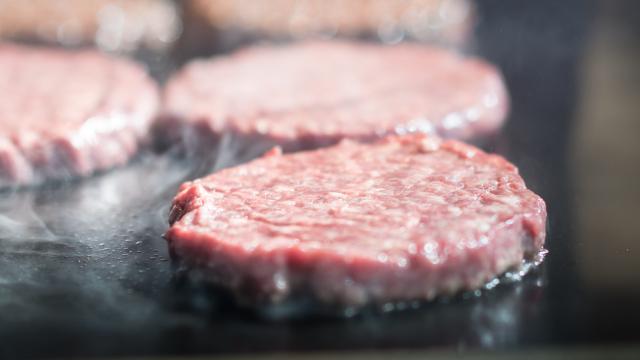I wouldn’t go so far as to say grilling season is over. I actually think cooking outside when it’s a little chilly is far more pleasant than cooking outside when it’s blazing hot. But most people prefer to grill their burger and dogs in the sunshine, and many folks (especially those who live in areas that are prone to rain) will be pivoting to cooking indoors over the next few weeks.
[referenced id=”847710″ url=”https://www.lifehacker.com.au/2020/05/thin-burgers-are-better-than-thick-ones/” thumb=”https://www.gizmodo.com.au/wp-content/uploads/sites/4/2018/07/24/pryhkmyrjmpelbvhgcqk.jpg” title=”Thin Burgers Are Better Than Thick Ones” excerpt=”Burgers have gotten out of hand. Not only are bistro pubs and hip bars topping them with everything from avocado to pork belly (both of which detract and distract), but the patties themselves are just too darn thick. A burger is not a steak; a burger is a sandwich, and…”]
This obviously doesn’t mean one should give up burgers and hot dogs. Both can be cooked inside just fine — I actually prefer a smashed, pan-cooked burger to a grilled one. What it does mean, however, is that you might want to consider using a leaner burger blend.
When you cook burgers on the grill, the fat drips away from the burger, through the grates, and into the flames. Starting with a higher fat content (at least 80/20) makes sense here, as you lose a good bit during the cooking process. But when you cook your burgers inside, in a pan on the stove, the grease stays in the pan. The burger cooks in its own fat, which helps form a delicious crust (which, in my opinion, results in a tastier burger).
Failing to adjust the fat content when you take your burger inside can result in two things: a greasy burger (which isn’t necessarily bad, but some don’t care for it), and a lot of smoking grease (which smells bad and can trigger your smoke alarm). Just a five per cent decrease in fat can help cut back on grease, while still providing enough fat to create a juicy burger with delicious crust.
If your grocery store doesn’t offer an 85/15 blend, buy half 80/20 and half 90/10, then mix them together, or ask the butcher if they can create a blend for you. If you have a meat grinder, now is the perfect time to experiment with adding more flavorful but leaner meats to your chuck. Plate, flank, and shank all have a lean-to-fat ratio of 90/10 or above, and some really interesting, restaurant-quality tasting notes.

Leave a Reply
You must be logged in to post a comment.